The list of vehicle premieres and innovative technologies at the International Motor Show (IAA) introduced to the world’s public for the first time by Mercedes-Benz and its predecessor brands at this exhibition is long. In 2021, several vehicles of the brand are celebrating significant anniversaries of their IAA presentation. The IAA is the largest trade event in the German-speaking region and has international importance. It can trace its history all the way back to 1897.
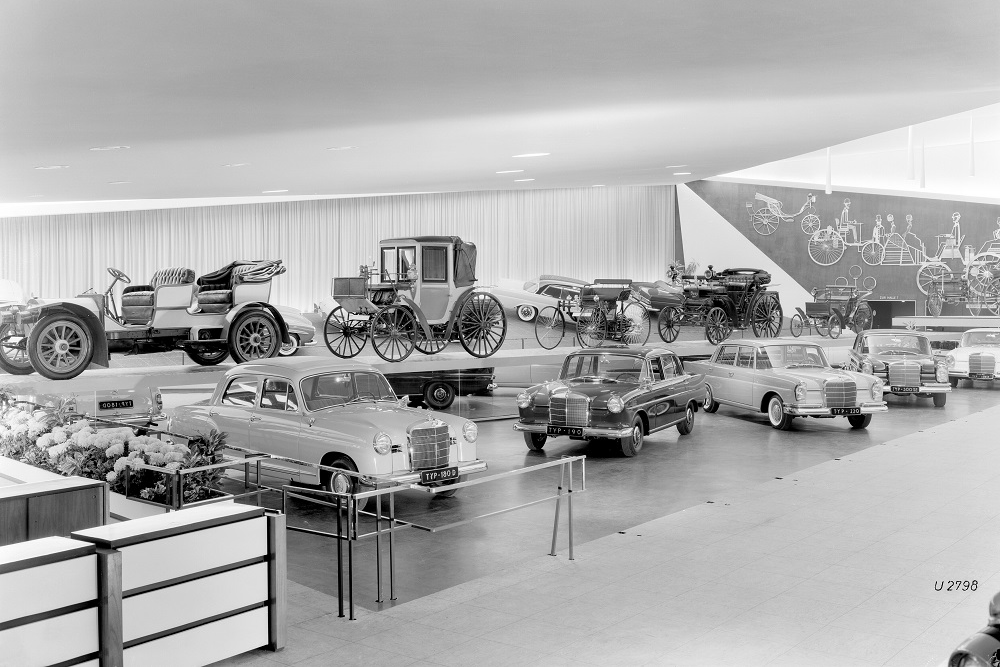
- The industry event is an important innovation platform for Mercedes-Benz
- Premiere 60 years ago: 300 SE (W 112), cabriolet of the W 111 model series, saloon of the W 110 model series
- 1981: 380 SEC and 500 SEC of the 126 model series
- 1991: Cabriolet of the 124 model series
This year IAA Mobility is took place in Munich with a new and exciting concept. Under the motto “What will move us next”, the event organised by the German Association of the Automotive Industry (VDA) considers itself a global stage, showing the way to climate-neutral mobility.
60 years ago: Top-of-the-range 300 SE (W 112) model
The luxury-class top-of-the-range 300 SE model was one of the new Mercedes-Benz vehicles at the IAA in Frankfurt am Main 60 years ago (21 September to 1 October 1961). The S-Class predecessor – like the “tail fin” models 220, 220 S and 220 SE (W 111) introduced before it in 1959 – had the safety body with crumple zones and a rigid passenger compartment, a milestone in automotive technology.

The 300 SE (W 112) expanded its range upwards: its six-cylinder engine had 118 kW (160 hp), plus it had air suspension and the new automatic transmission, developed in-house by Mercedes-Benz, as standard equipment. The long-wheelbase version of this model appeared in 1963 and founded a new tradition in the luxury-class saloon portfolio of Mercedes-Benz: the 100-millimetre-longer wheelbase offered passengers in the rear significantly more legroom and travelling comfort.
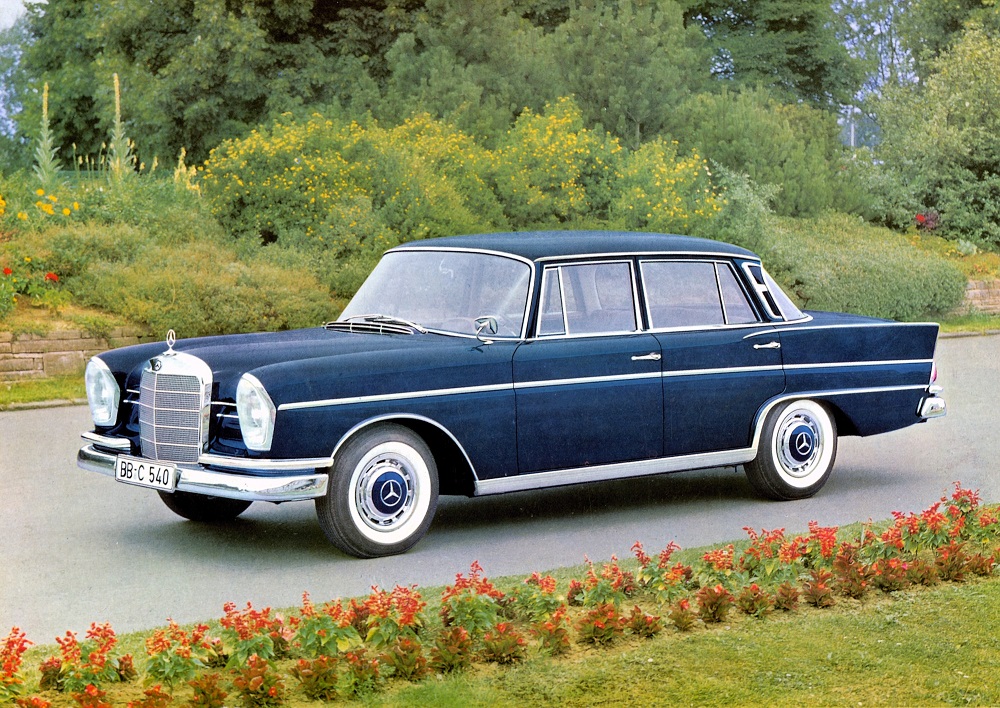
60 years ago: The luxury-class W 111 model series cabriolet
Another major attraction at the 1961 IAA was the cabriolet of the W 111 model series. The open-top luxury-class vehicle not only drew attention with its impressive design and its timeless elegance, but also with its four fully fledged seats and generous spaciousness. As early as the spring of 1962 Mercedes-Benz had already expanded the model range with the 300 SE Cabriolet (W 112).
To this day, the open vehicles – along with the respective coupés – count among the most beautiful Mercedes-Benz vehicles and are considered to be some of the most sought-after classics worldwide. The designs proved so perfectly timeless that the coupé and cabriolet stayed in production for eleven years. In addition, they had a lasting influence on the design of the W 108/W 109 model series of luxury saloons built from 1965 onwards, and were built in parallel with them until 1971.
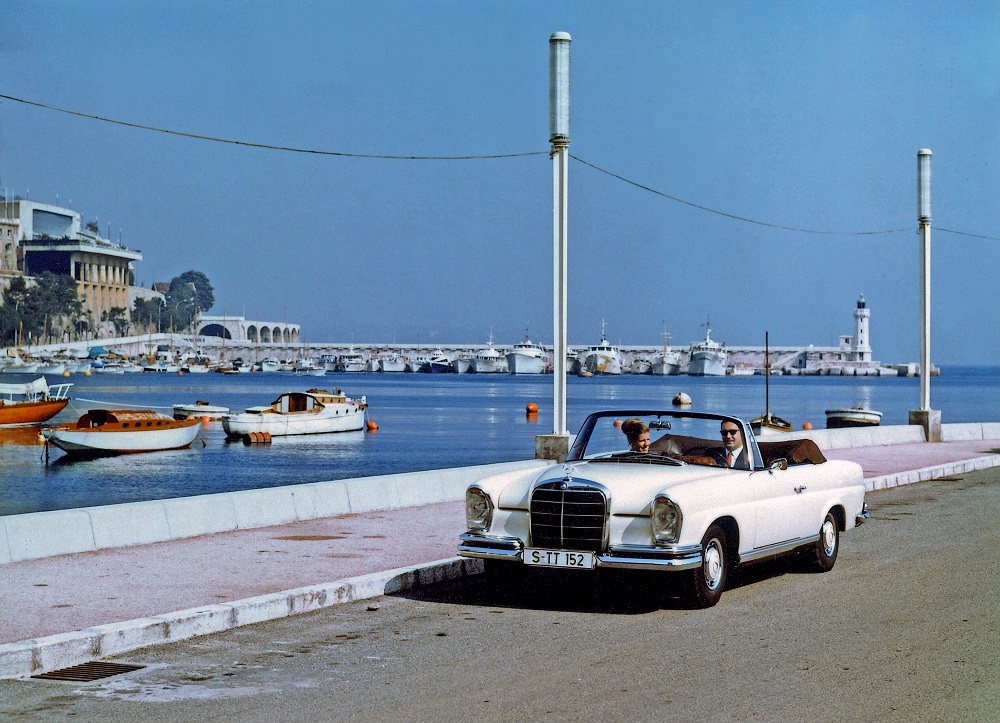
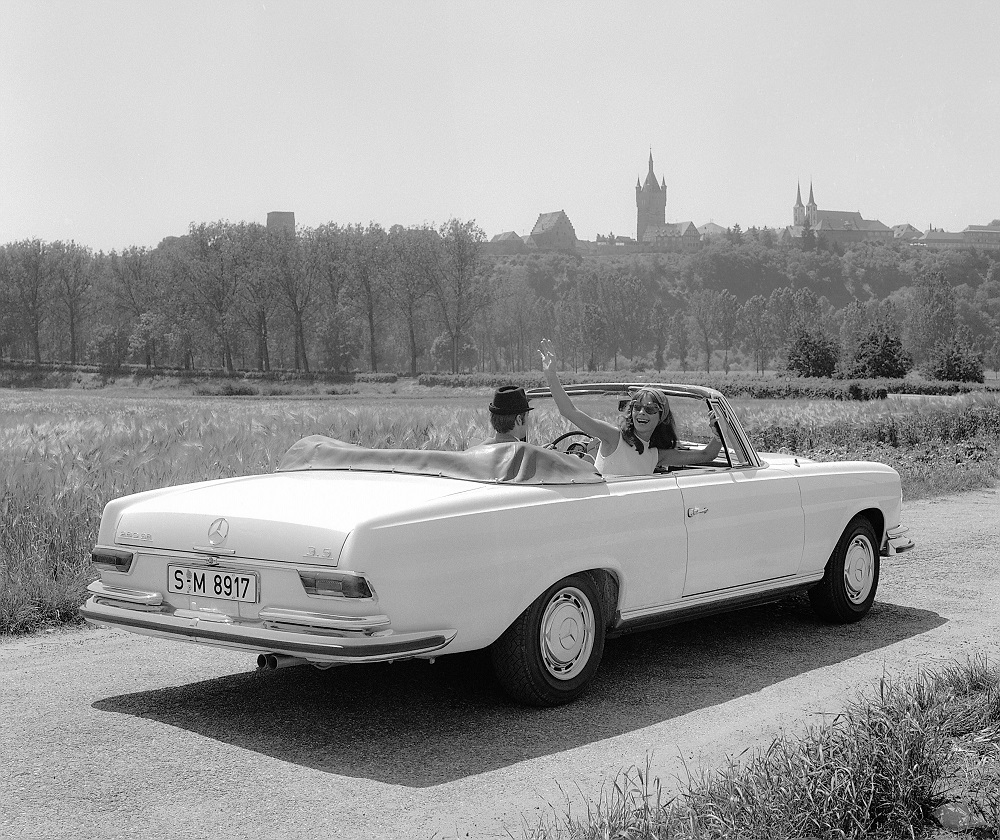
60 years ago: The E-Class predecessor W 110
Mercedes-Benz also had a third new passenger car at the 1961 IAA: the “tail fin” model series (W 110). Its accomplished combination of spaciousness, comfort, power, price/value ratio and economy were considered ideal. In the luxury mid-range series, too, the rigid passenger compartment with crumple zones at the front and rear set standards in safety.
Furthermore, the “tail fin” models spoiled their occupants as early as the mid-1960s with amenities taken for granted today such as automatic transmission, power steering, electric windows, steel sliding roof and air-conditioning system. Initially the four-cylinder saloons of the 190 and 190 D model were available. Further models successively became available, up to the 230 model with a six-cylinder engine.

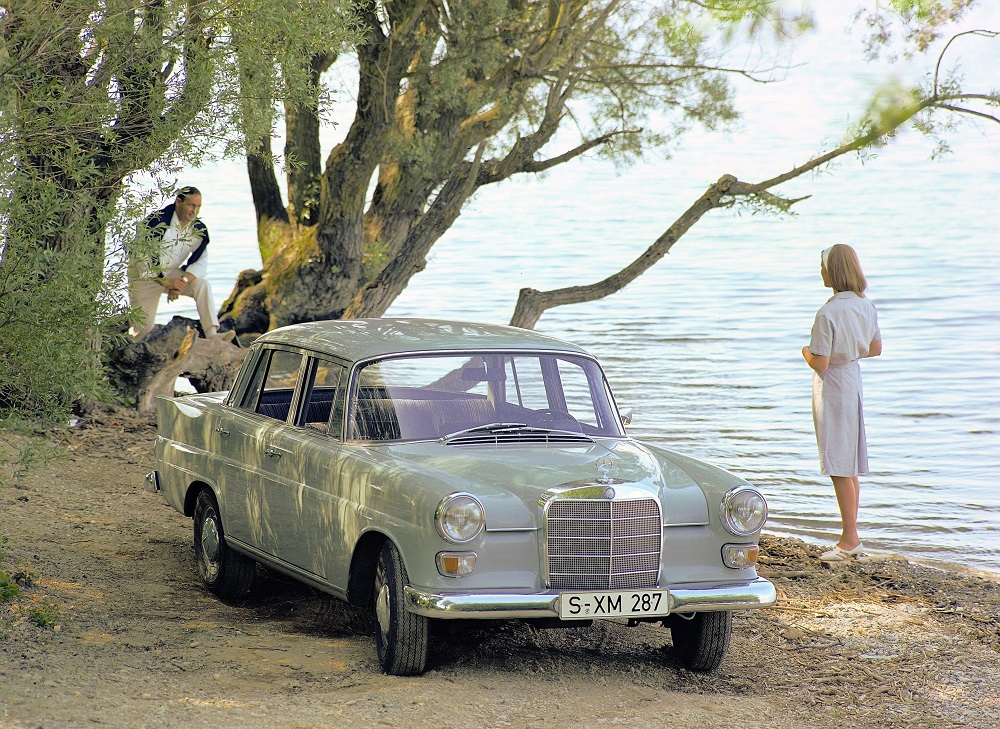
40 years ago: The 126 series coupé
A much-noticed world premiere was celebrated at the IAA from 17 to 27 September 1981 by the 380 SEC and 500 SEC Coupés of the 126 model series. They were based on the S-Class Saloon, which had been presented two years earlier. The sub-frame was admittedly shortened by 85 millimetres, yet they were fully fledged four-seaters. The bodyshell was designed to reflect the latest safety research findings.
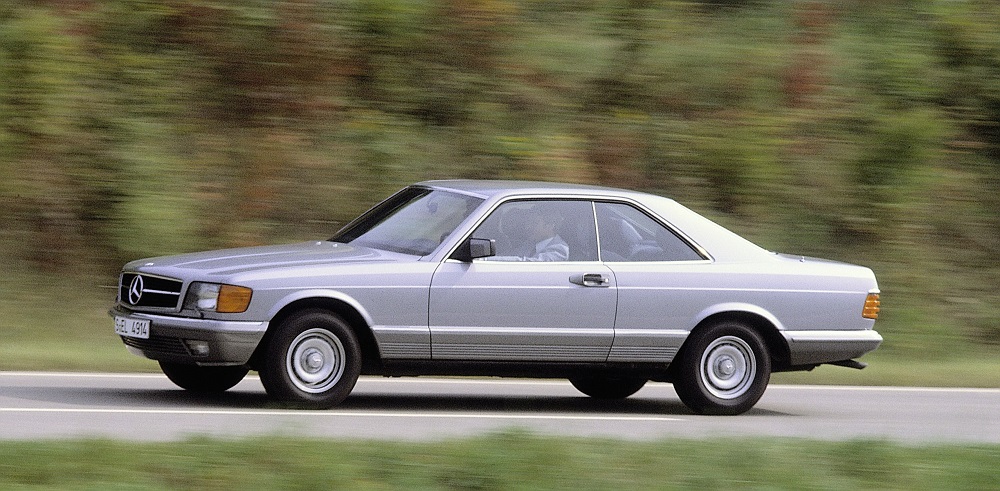
The design was created under the aegis of Bruno Sacco, who is proud of the result to this day. An interesting item of equipment of the coupés were the electrically operated seat belt feeders, which came as a standard feature in the SEC models. An airbag for the driver and a belt tensioner for the front passenger were also available upon request. In 1985, the 560 SEC with a 5.6-litre engine became the new top-of-the-range model.
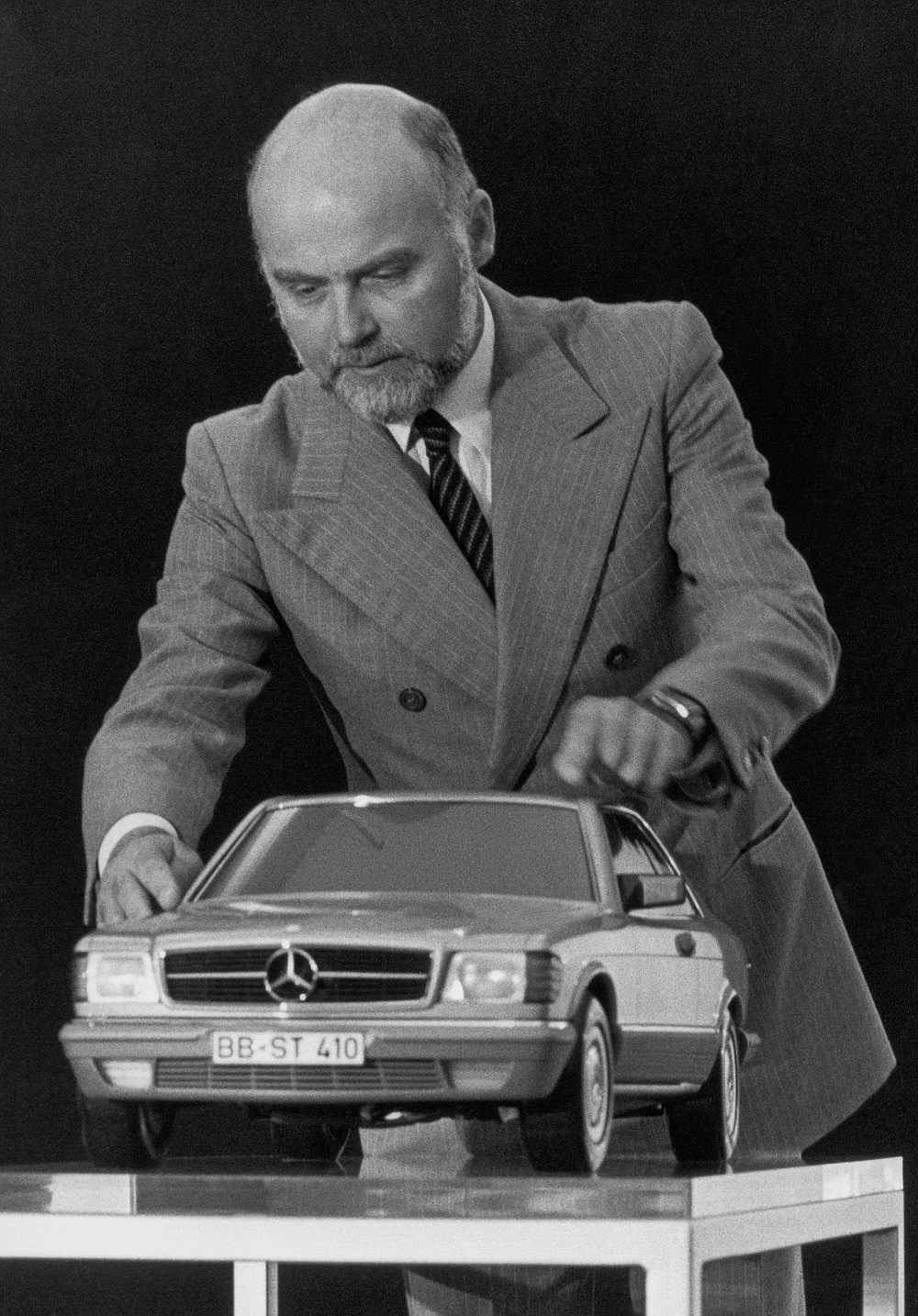
30 years ago: The cabriolet of the 124 model series
Today 124 model series Mercedes-Benz cabriolets are sought-after modern classics. They perfectly combine the passion for elegant, open-top cruising with the Stuttgart-based brand’s high technical and safety standards in the luxury mid-range series. They had their premiere 30 years ago at the IAA from 12 to 22 September 1991 – seven years after the presentation of the saloons of the 124 model series. At the same time they continued the tradition of the four-seater Mercedes-Benz cabriolet after a break of 20 years – the legendary W 111/W 112 Cabriolets were built until 1971.
The cabriolet was based on the coupé of the 124 model series, yet received numerous reinforcements. The levels of passive safety were exemplary: in the event of frontal, rear or side impact, the cabriolets met the high standards of the saloon, estate and coupé. As rollover protection, the A-pillars received internal profile sheets and the vehicle also received a newly developed and patented linear rollover bar. The fully retractable soft top also met stringent demands in terms of driving comfort.
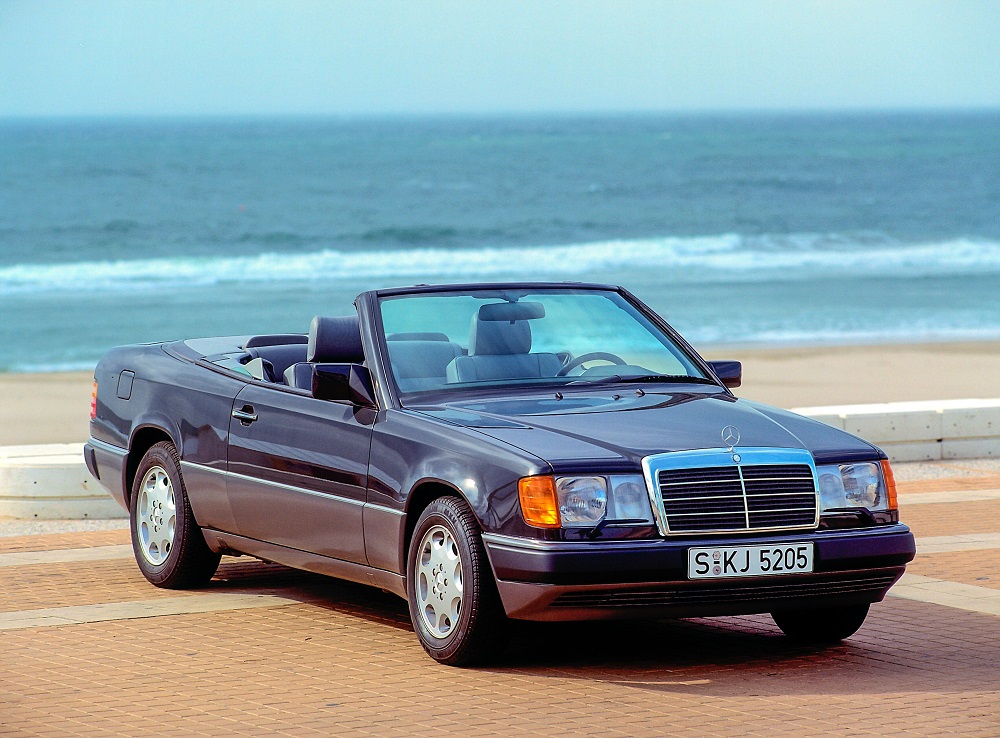
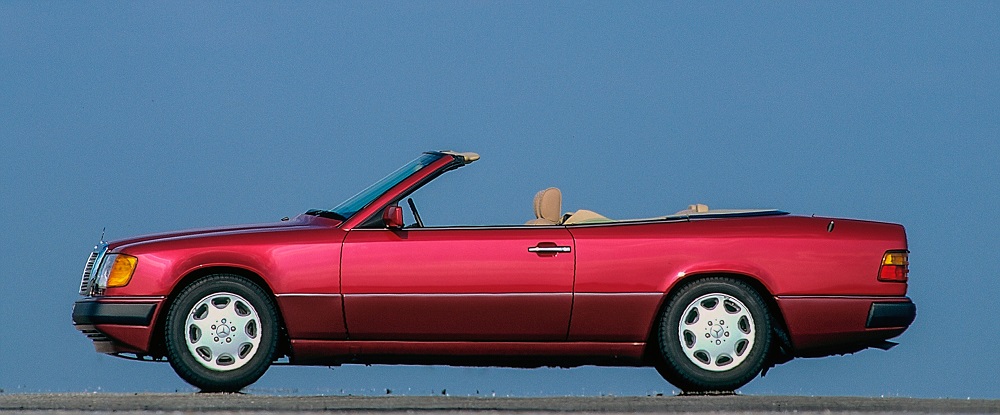
Mercedes-Benz and the International Motor Show
The IAA is an important platform for Mercedes-Benz. It is the biggest industry event in Germany and thrills both experts and car enthusiasts. In almost 125 years of IAA-history, Mercedes-Benz has secured itself a firm spot there: the event originated as a one-day and very modest automotive exhibition in 1897 in Berlin. Back then the newly founded Mitteleuropäische Motorwagen-Verein (Central European Motor Vehicle Club, MVV) organised a “demonstration of motor vehicles” for the first time. Eight cars were displayed – four by Benz alone and one by Daimler. Yet over the years, the exhibition grew considerably. By 1899 at the latest, the name “Internationale Motorwagen-Ausstellung (International Motor Vehicle Exhibition)” had taken its relevance beyond Germany and in 1904 it became known as the “International Automobile Exhibition” for the first time. Most IAAs before the Second World War took place in Berlin, but some were also held at other locations such as Frankfurt am Main (1904) and Leipzig (1928).
After the Second World War, the car manufacturers initially exhibited at the “Exportmesse” in Hanover from 1947 to 1949 and at the “Autoschau” in West-Berlin in 1950. In April 1951, 70 years ago, the IAA was held in Frankfurt am Main, where it would have its home for the next several decades. Just as it was before the war, Daimler-Benz AG was a solid partner back then. The exhibition was a major event right from the start: in 1951, across 44,000 square metres, 537 exhibitors presented a total of 553 cars and commercial vehicles. 570,000 visitors came from 45 countries. The Mercedes-Benz 300 (W 186), later known as the “Adenauer-Mercedes”, as well as the 220 (W 187) were sensations of international note, and the corporate presence was convincing: “Vast, colourful lengths of fabric transform the Mercedes hall into an intimate tent. Like a monument in the middle of the hall, there is an old Daimler-Benz, a petrol-powered carriage from the infancy of the car. It shimmers and shines all around,” the “Hamburger Abendblatt” enthused. The rush of visitors to Mercedes-Benz was considerable. “The entrances to the Mercedes-Benz hall had to be constantly occupied by mounted police,” the “Automobil Revue” reported.
Since then, new vehicles by Mercedes-Benz have been cause for furore time and time again at the IAA. It became a tradition that the brand would completely take over the festival hall right by the City entrance. For many years an escalator transporting visitors to the top level meant people were able to get a first glance from a bird’s eye view before strolling back down through all the novelties. But that is history now. Beginning in 2021, the IAA Mobility will stay abreast of the many changes in mobility in Munich and move the event into the future with a new concept. Mercedes-Benz has always helped shape this with a new product – this is a constant that remains.
If you are interested in more news click here.










